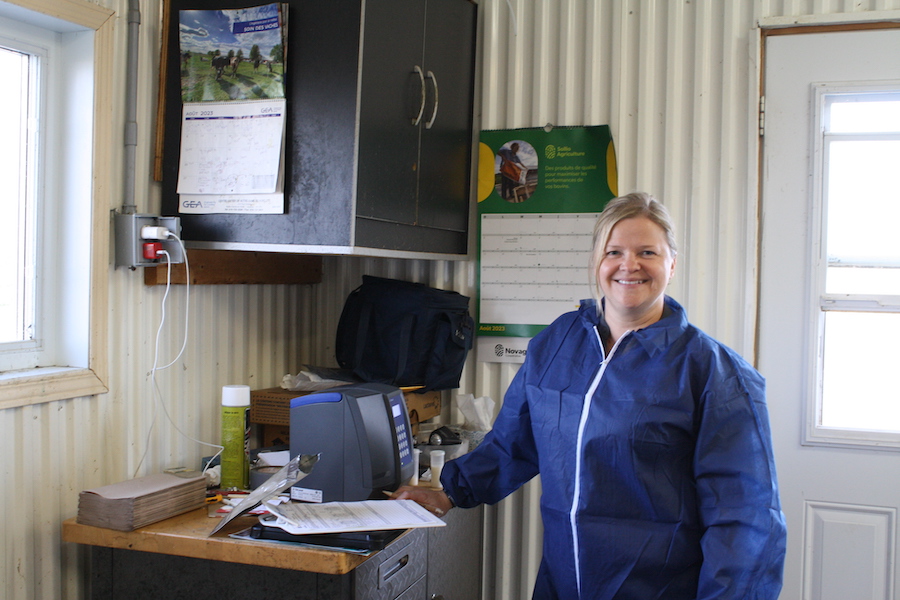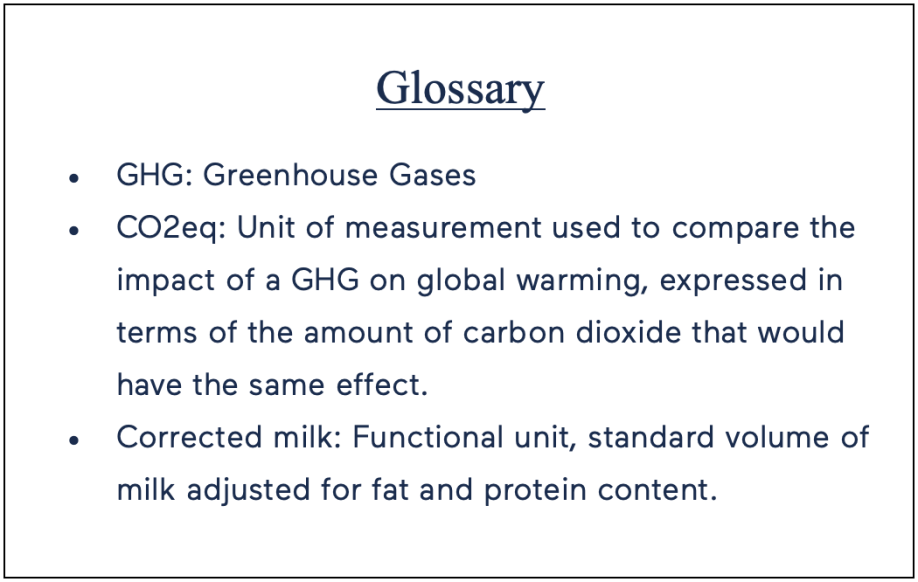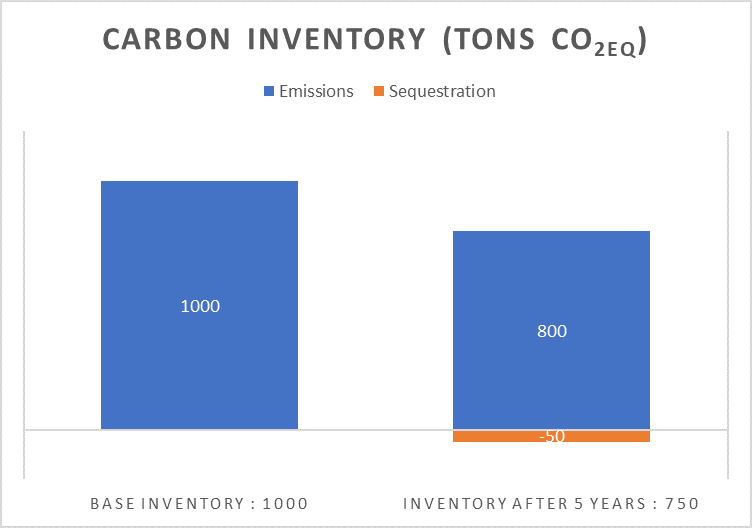Measuring our carbon footprint, leverage for Agropur and dairy producers

Reducing the impact of dairy production on the environment is a priority for Agropur. Reducing GHG emissions is the main way to address one of the biggest challenges facing all of us today: climate change. The Cooperative is committed to doing its part to assist in this global effort.
All this talk about carbon credits and carbon footprints can be confusing. Basically, to create a carbon credit on the farm, you must either sustainably reduce emissions or permanently sequester carbon. To determine the amount of emissions reduced or carbon sequestered, you need a baseline measurement of the farm’s carbon footprint. To do this, you need to calculate your carbon footprint.
“A carbon footprint is a calculation that determines the amount of GHG emitted into the atmosphere by the activities of an area, such as a farm, over the course of a year,” says Etienne Dupont, Sustainable Agriculture Advisor at Agropur. “The calculation also considers the amount of carbon sequestered by plants and soils. It is therefore a measure of total GHG emissions minus the amount of carbon sequestered.”
When doing a carbon footprint, direct emissions such as soil cultivation and livestock production and indirect emissions such as fertilizer production and wastewater treatment are taken into consideration.
“It’s important to note that to be recognized, carbon improvements must go beyond what is required by regulations or industry standards,” says Etienne Dupont. “For example, complying with new provincial regulations can improve a dairy operation’s carbon footprint, but because all farms will be doing it, it doesn’t qualify as a carbon credit.”
A sample calculation
The carbon footprint is done annually, and the farm can see the effectiveness of the strategies implemented year after year. Changes in the footprint may be unpredictable due to numerous variables specific to the dairy industry, such as weather changes, capital investments, and equipment breakdowns.
To illustrate the concept, we’ll take the example of a fictitious (though realistic) farm called Good Milk Farms. Good Milk is an Agropur member that produces 1,000,000 kg of corrected milk per year. Let’s assume that the farm does not increase its milk production during this period: The carbon footprint indicates 1,000,000 kg of CO2eq emitted and 0 sequestered. Good Milk’s emission intensity for the baseline calculation is therefore 1 kg CO2eq/kg of corrected milk. This is slightly higher than the latest Canadian average calculated in 2016, which was 0.92.
After this first assessment, Good Milk introduces new practices that go beyond the usual field and barn operations, allowing it to reduce its emissions and increase sequestration.
After five years, Good Milk’s carbon footprint indicates that emissions are now 800 tonnes, and the farm now sequesters 50 tonnes, giving a final carbon balance of 750 T CO2eq per year. Its emission intensity is now 0.75kg CO2eq/kg of corrected milk, a 25% improvement.
Action items
Remember that Agropur has calculated its carbon footprint and announced its targets. On-farm emissions are included in Agropur's carbon footprint, so any on-farm improvements help us reach these targets. The member who takes part in this exercise and communicates his or her results to Agropur helps our company stand out from the competition. However, quantified improvement must remain within the dairy sector if the industry is to achieve carbon neutrality by 2050.
“Dairy farmers who measure their progress and make improvements help us reach our common goal,” says Etienne Dupont, specifying that Agropur will announce the next phase of the Sustainable Farms project and initiatives to mobilize members and support them in their efforts in 2024.
Want to calculate your carbon footprint or learn more about this topic? Complete this form and let us know.
You can also contact your cooperative advisor. Contact details are found on your Agropur milk pay, your capital statement and the member extranet.
MEMBER SERVICES
Your Cooperative Advisor: An ally in achieving your goals
Did you know that Agropur has an experienced team of eight Cooperative Advisors you can rely on? Learn more about their services and how they can help you.












